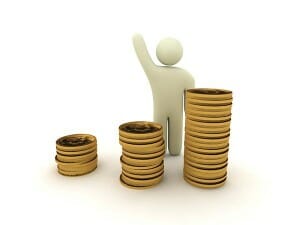As humans, we are naturally attracted to any form of investment that promises an immediate and high-yield return of our money, which is why investors are particularly fond of high-yield dividend stocks.

These investments promise quick cash flow into portfolios, and with high percentages of returns at that.
Now, of course any investment should be done with the intention of enjoying the benefits of returns and earnings later on.
But there is also a danger of focusing too much on investing in companies that pay high dividends solely because of this characteristic, without really looking at other fundamentals and signs of a healthy, thriving, growing company.
High-Yield Dividend Is Not Always Good
Analysts and financial planners generally agree that a public company with a very high yield may not always be doing so because of a steady amount of cash flow; many times, this is also a sign of financial uncertainty or reduced profitability.
Sometimes, the higher yield could be the result of a drop in the stock price as explained in http://seekingalpha.com/article/862331-high-dividend-yield-stocks-here-s-what-may-be-wrong-with-them.
Meanwhile, other experts caution against a possible “high-yield dividend stock bubble” that could burst any time because of over-saturation.
High Yield Dividend Stock Bubble
In his post entitled Are High Yield Stocks in Bubble Territory, Alliance Bernstein analyst Joseph Paul said, “The widespread pursuit of safety in high-yielding stocks has driven up their valuations and increased market concentration in these stocks”.
He added, “What’s more, high-yield stocks now account for a much bigger share of the market, elevating the risk that arises when the market becomes overly concentrated in an overpriced subset—such as technology stocks in the late 1990s. In the US, where this trend is most pronounced, stocks with yields 20% or more above the market’s now account for 44% of the S&P 500 Index on a cap-weighted basis. That’s their highest share in the last three decades and well above the historical average of 36%…”
Check Dividend-Paying Company’s Fundamentals
If you decide to invest with high yield stocks, check that the fundamentals of the company are healthy and in line with their goals. Don’t forget the basics of dividend investing.
Check the company’s reported earnings as well as other financial factors and income/liabilities; this is important because dividends only depend on the company’s cash flow, so the company can decide to still pay dividends even if they are losing money overall, as long as they have sufficient cash flow.
More often than not, a long-term investing strategy in dividend income is a safer, more reliable route rather than going for high-yield dividends with uncertain results. What is recommended instead of an immediately high-yield dividend is a stock with a steady increase yearly based on profitability.